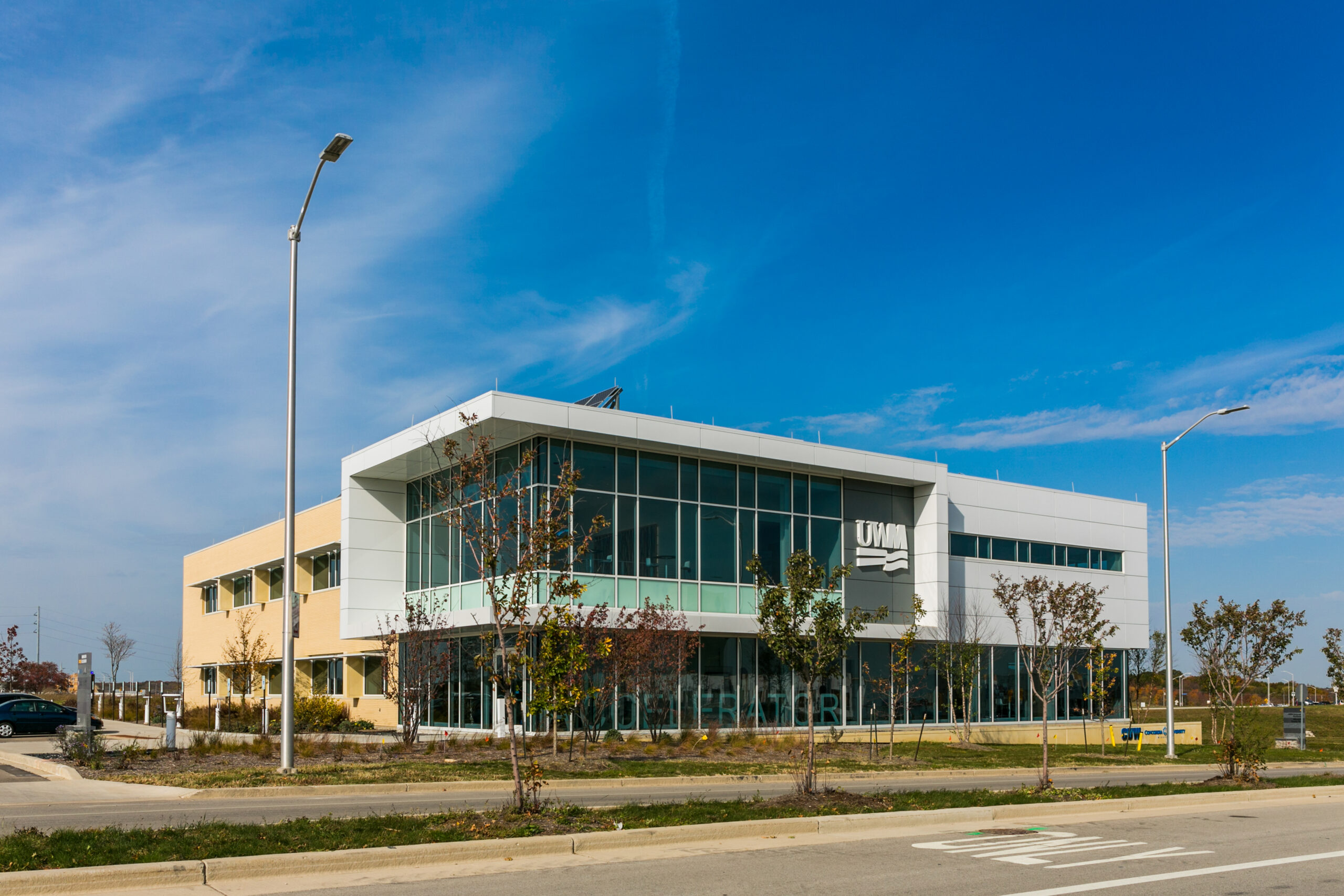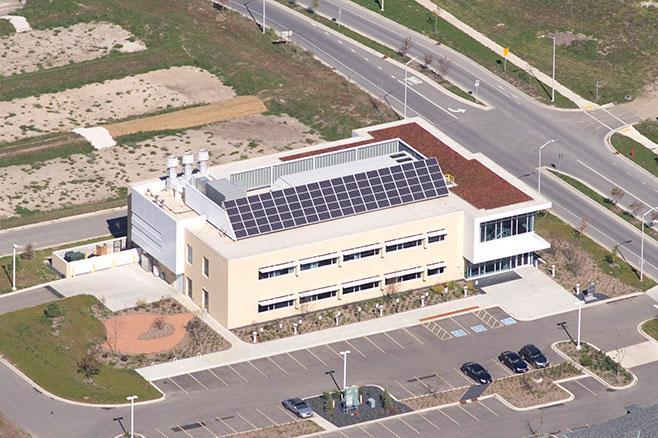University of Wisconsin-Milwaukee (UWM) Innovation Campus
Landscape Architecture, Natural Resources, Site Design | Wisconsin | Back
Challenge
When UWM began planning for a research-based campus in 2006, they quickly identified several branches of engineering with close links between academia and industry.
Biomedical and materials engineering relies heavily on corporate partners to propel and support advanced research. They often work hand in hand to deliver the tools, equipment, and prosthetic solutions found in the medical field.
In 2011, UWM announced the site chosen for the new campus. The site was located immediately north of both the Milwaukee County Research Park and the Milwaukee County Medical Center, which houses the Medical College of Wisconsin.
The site had been vacant for more than 30 years, which presented challenges. For example, we needed to address the wildlife on site by coordinating extensively with habitat specialists. Also, information regarding abandoned utilities and infrastructure in the area was largely unknown.
Solution
The Innovation Accelerator Building was the first building constructed at the Innovation Campus. The project required coordination with the UWM Foundation to ensure it met the long-range concepts and vision of the development.
The building project was LEED Silver certified and incorporated sustainable landscaping, natural stormwater management, and ecological habitat creation.
The Innovation Campus is an urban oasis that provides a natural habitat for a multitude of animals, birds, and insects, including an integral and vital resting area for migrating monarch butterflies.
This historic project was the first of several commercial developments to include the re-establishment of natural habitat.
Services Provided
- Site design
- Stormwater management
- Wildlife management
- Wetland delineation
- Drainage design
- Green infrastructure
- Landscape architecture
Industries Covered
- Site Design
- Landscape Architecture
- Natural Resources
Results
The new facility allows UWM faculty, staff, and students to conduct research, the results of which could potentially benefit businesses.






